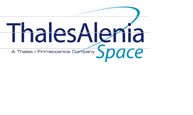
-
StatusOngoing
-
Status date2015-03-20
The vast majority of C and Ku-band telecommunications satellites currently in orbit are based on conventional payload architecture associating the generation of fixed wide coverages, fixed frequency plans, channelized amplification with IMUX/OMUX and dedicated HPA per channel.
Enhancing capacity and flexibility is one of the main challenges for new generation C-band and Ku-band payloads. In the frame of different previous studies, Thales Alenia Space studied different payload architectures to cope with these objectives.
The operators are currently considering the possible replacement of wide beams by multibeam coverages. They are strongly interested in making use of the advantages offered by multibeam payloads compared to conventional payloads generating wide beams
The objective of the project is to select an antenna configuration relevant for C-band multibeam mission and initiate the development of its associated feed cluster.
Different antennas configurations (MFB, SFB) with their respective performances (achievable antenna gain versus C/I) are investigated.
In C-band, multibeam antenna solutions and their associated RF performances are strongly dependant on the mission characteristics. The size and number of spot beams, the regularity of the beam mesh, the position of interfering spots, and the targeted couple gain / C/I can deeply modify the outcomes and can drastically reduce the number of possible configurations. Moreover, mass and accommodation constraints of the feed cluster are an issue in C-band, and their reduction should be addressed as a constant objective.
The antenna product is strategic for the global value chain of the C-band multibeam payload, according to the close relation between the payload and the antenna sub-system in terms of architecture as well as achievable performance.
The antenna product investigated in the project answers to typical needs for C-band multibeam application:
- Generation of up to 24 beams between 2° and 3°, with typical diameter of 2.5°
- Capacity to cover very wide coverage : more than 30% of the Earth field of view.
- Operation over wide frequency bands (3.7-4.2 GHz for Tx, 5.925-6.425 GHz for Rx)
- Typical bandwidth per user beam : up to 250 MHz in circular polarisation
- High C/I performance: at least 20 dB C/I uplink and downlink are requested, permitting to operators to offer large panel of applications.
- Targeted antenna gain > 30 dBi
Power handling per beam : 100 W typical
SYSTEM ARCHITECTURE
The C-band antennas configuration consists in shaded single shell deployable reflectors that are illuminated by multifeeds located at the focal point of the reflector shell parabola. Each feed address one beam both for Tx and Rx band. Dimensions are compatible of accommodation of two feed cluster on the same satellite wall. Each feed cluster is composed of C-band elementary User feeds(spline profile horn and Tx/Rx exciter).
The plan of the project is to confirm the specifications for multibeam C-band antennas, investigate the different antenna configurations (SFB, MFB) with their respective performances (achievable gain versus C/I) and define a development plan for the feed cluster.
The trade-off phase has been achieved, and the selected antenna configuration has been investigated. RF consolidation, mechanical and thermal analyses have been carried out. The study is completed



